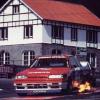Highest boost on stock turbo?
Announcements
-
Similar Content
-
Latest Posts
-
C34 Stagea RS4S Standard RB25DET Neo with ARP Headstuds and MLSR Gasket. Bosch 1000cc injectors Walbro 460 Standard neo inlet plenum w/rb25 s2 throttle body 6 Boost Low Mount Manifold Turbosmart Gen V 45mm wastegate (recirculated) Pulsar g30-770 (0.72 rear housing) 3.5"intake pipe to clear mounts, 3.5" dump to 3" exhaust Link G4X Ecu 380 hp on 98 octane, 478 HP on e85 (mainline hub dyno) Video of Earlier Run VID_300701109_043404_458.mp4 Final Dyno Sheet:
-
Meh. Every single gear in my gearbox will crunch. I've been treating it nicely for >12 years now.
-
By joshuaho96 · Posted
How fast are you doing the downshift? 4th gear was revised multiple times until 1998 to fix this issue. Synchro clips can fall out, synchros can wear. Most likely you're looking at a new transmission unfortunately. If you need to limp it until then double clutch downshifts into 4th. -
Sorry I was being harsh there, but am I wrong? You can buy a M340i easily, and there's loads available second hand. A lot more workshops modifying them as well. How about getting parts for them? Don't get me wrong, I'd love a 400R, even a 4cyl (I looked at a few V36s before buying my shitbox BMW). Sadly Infiniti died in Aus and we're stuck with importing them as niche vehicles. Supply and demand
-



Recommended Posts
Create an account or sign in to comment
You need to be a member in order to leave a comment
Create an account
Sign up for a new account in our community. It's easy!
Register a new accountSign in
Already have an account? Sign in here.
Sign In Now